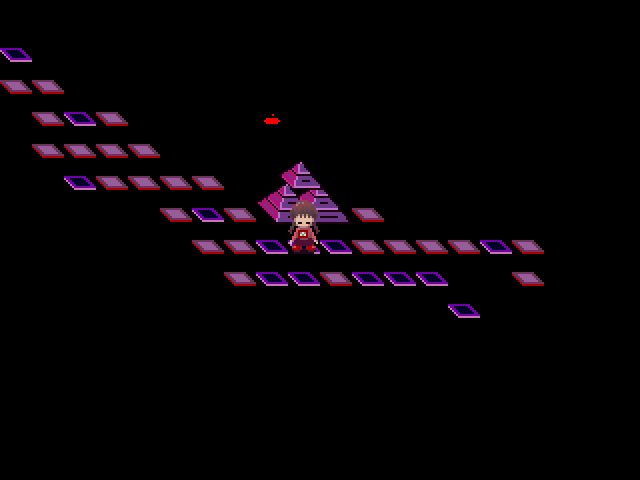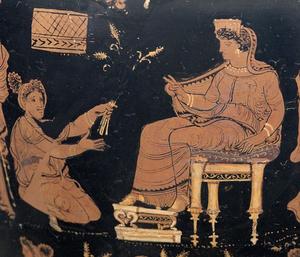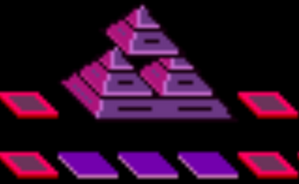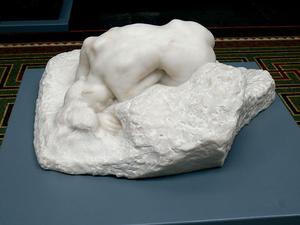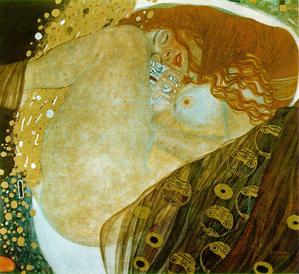The Neon Tile Path(Liturgical colours)
Post-1969 Rubrics
In the Roman Rite, as reformed by Pope Paul VI, the following colours are used.[1]
| Color | Obligatory Usage | Optional Usage (in lieu of prescribed obligatory colour) |
|---|---|---|
| Violet |
|
|
Snow World(Liturgical colours)
※Snow World 's door is Liturgical colours ⇒ The Neon Tile Path is Red&Purple(Sacrament of Reconciliation)
The Neon Tile Path(Baptism of blood)
Martyrdom was identified early in Church history as "baptism by blood", enabling martyrs who had not been baptized by water to be saved. Later, the Catholic Church identified a baptism of desire, by which those preparing for baptism who die before actually receiving the sacrament are considered saved.[15] As evidenced also in the common Christian practice of infant baptism, baptism was universally seen by Christians as in some sense necessary for salvation, until Huldrych Zwingli in the 16th century denied its necessity.[16] The Neon Tile Path(Liturgical colours) The Neon Tile Path is Red(Baptism of blood) & Purple(Sacrament of Reconciliation)
The Neon Tile Path(Demeter)
In ancient Greek religion and myth, Demeter (/diˈmiːtər/; Attic Δημήτηρ Dēmētēr. Doric Δαμάτηρ Dāmātēr) is the goddess of the harvest, who presided over grains and the fertility of the earth. Her cult titles include Sito (σίτος: wheat) as the giver of food or corn/grain[1]
Demeter's character as mother-goddess is identified in the second element of her name meter (μήτηρ) derived from Proto-Indo-European *méh₂tēr (mother).[4] In antiquity, different explanations were already proffered for the first element of her name. It is possible that Da (Δᾶ) (which became Attic De (Δῆ)) is the Doric form of Ge (Γῆ), "earth", the old name of the chthonic earth-goddess, and that Demeter is "Mother-Earth".[5]
※"Pyramid" in The Neon Tile Path is like "Delta Δ"
The Neon Tile Path(デーメーテール(Dhmhvthr))
ギリシア語のmeterは「母親」の意味である。Deはデルタdeltaつまり三角形で、ギリシアの聖なるアルファベットで、「女陰を表す文字」として知られる女性性器のしるしである。
Greek "meter" means a "mother."
"De" is "delta", i.e., a triangle, is the sacred alphabet of Greece, It is a mark of the aphrodisiacal tennis court known as "a character showing daughter shade."
インドのヨーニ・ヤントラYoni-Yantra(女陰のヤントラ図形)と同じである[1]。
It is the same as "Yoni-Yantra (Yantra figure of daughter shade)" of India [1].
※"The Neon Tile Path" means a "Inside of a vagina" of "Madotsuki's Mother?"
ギリシア語のde(delta)に対応する語として、サンスクリットのdwh、ケルト語のduir、ヘブライ語のdalethがあるが、いずれも、生誕、死、あるいは性的楽園、の入り口を意味した[2]。
Although there were "dwh" of Sanskrit, "duir" of Celt language, and Hebrew "daleth" as a word corresponding to Greek "de (delta)", all meant the entrance of birth, death, or sexual paradise [2].
※"The Neon Tile Path" or "Hell" is "all meant the entrance of birth, death, or sexual paradise [2]."
かくして、デーメーテールはアジアで言うところの「神秘な女性の入り口……そこから天界と大地が躍り出た根」であった[3]。
ミュケナイでは、デーメーテールを祀った最も初期の祭儀の中心地のひとつは、丸天井式地下納骨堂で、その出入り口は三角形、通路は膣状で短く、丸天井であったが、それは女神の子宮を表すものであった。そこから再生するものと考えられていた。
In Mycenae, although one of the centers of an early festival was a vault type underground charnel most, and the entrance of the triangle and the passage was short at the shape of a vagina and it was a vault, it was the thing showing the womb of a goddess which deified Demeter.
It was thought that it reproduced from there.
※"the entrance of the triangle"(Pyramid in The Neon Tile Path) is "...the womb of a goddess which deified Demeter."
この出入り口は、一般に、女性に捧げられた。シュメールでは、その出入り口は赤く塗られて、女性の「生命の血」を表した[4]。
Generally this entrance was offered to the woman.
In Sumer, the entrance was applied red and expressed female "blood of the life" [4].
※"Nenrikido" which is an entrance from "Hell" is applied "Red".
[1]Mahanirvantantra, 127. [2]Gaster, 302. [3]de Riencourt, 175. [4]Hays, 68.
The Neon Tile Path(The Suppliants (Aeschylus))
The Suppliants (Ancient Greek: Ἱκέτιδες, Hiketides, also called The Suppliant Maidens; Latin Supplices) is a play by Aeschylus. It was probably first performed sometime after 470 BC as the first play in a tetralogy, sometimes referred to as the Danaid Tetralogy, which probably included the lost plays The Egyptians (also called Aigyptioi), and The Daughters of Danaus (also called The Danaids or The Danaides), and the satyr play Amymone.[1][2]
The remaining plays of the tetrology have been mostly lost. However, one significant passage from The Danaids has been preserved. This is a speech by the goddess of love Aphrodite praising the marriage between the sky (the groom) and the earth (the bride) from which rain comes, nourishing cattle, corn and fruits.[3]
※"Blood rain" in The Neon Tile Path and "the earth (the bride) from which rain comes"
This is reflected in the question Pelasgus asks of the Danaids' in The Suppliants which echoes Athenian law on the subject: "If the sons of Aigyptos are your masters by the law of the land, claiming to be your next-of-kin, who would wish to oppose them?"[3]
Thomson speculates that as Oresteia ends by validating the contemporary Athenian law regarding trial for murder by the court of Areopagus, the Danaid plays may have ended by validating the contemporary Athenian law regarding marriage of next-of-kin when the husband dies without an heir.[3]
Thomson further suggests the possibility that as Oresteia's ending dramatizes the establishment of the court of Areopagus, the Danaid plays may have ended by dramatizing the establishment of the festival of the Thesmophoria, a festival reserved for woman which was based on the cult of Demeter which, according to Herodotus, was brought to Greece from Egypt by the Danaids.[3]
※"Pyramid" in The Neon Tile Path and "to Greece from Egypt by the Danaids.[3]"
Ridgeway, on the other hand, interpreted the plays as a dramatization of the conflict between matrilineal and patrilineal inheritance.[3]
※"Madotsuki's Family?" in "a dramatization of the conflict between matrilineal and patrilineal inheritance.[3]"
The Neon Tile Path(尿(Urine))
本物の生贄の生殖器は、ついには、それを象徴的に表す代用品(すなわち、ヘビや男根の形をしたパン切れ)に取って代わられた。しかしその意味するところは同じであって、神の尿、精液、または血が降ってくることへの願いだった[2]。
The genitals of the real sacrifice were finally taken and replaced with the substitute (namely, pan piece which carried out the form of a snake or a penis) which expresses it symbolically.
However, it was the wish to the meaning place being the same and the urine of God, semen, or blood falling [2].
※"Blood rain" in The Neon Tile Path and "the earth (the bride) from which rain comes"
アイスキュロスはダナイスたちの雨乞いの儀式について語っている。
Aeschylus is telling about the ceremony of pray for rain of Danaids and others.
※"the earth (the bride) from which rain comes" from "The Neon Tile Path(The Suppliants (Aeschylus))"
太女神女神デーメーテールは大地でもあり海でもあるので、雨-尿-精液-血などは両方に降り注いだ。巫女たちは天を仰いで叫んだ、「雨よ!」。次いで彼女たちは大地に目を落とし、叫んだ、「孕めよ!」[3]。
Since goddess Demeter was also the ground and also the sea, rain-urine-semen-blood was poured on both.
Shrine maidens "rain"! [ which looked up at them and cried for heavens ]
Subsequently, as for them, "become pregnant"! [ which dropped and cried for eyes on the ground ]
※"Blood rain" in The Neon Tile Path is "Demeter(Madotsuki's Mother?)"

